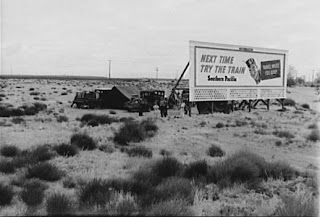Dorothea Lange
Dorothea Lange
Dorothea Lange was an influential American
documentary photographer and photojournalist,
best known for her Depression-era work
for the Farm Security Administration.
Lange's photographs humanized the tragic
consequences of the Great Depression and
profoundly influenced the development of
documentary photography.
In 1902, Dorothea developed polio in at age 7.
She emerged from the illness with a weakened
right leg, and a permanent limp. When she was
12 years old, her father abandoned her and
her mother. She promptly changed her last
name to that of her mother's madien name.
Lange was educated in photography in
New York City. In 1918, she moved to
San Francisco, and by the following year she
had opened a successful portrait studio. She lived
across the bay in Berkeley for the rest of her life.
In 1920, she married the noted western painter
Maynard Dixonand had two sons. One, born in 1925,
was named Daniel Rhoades Dixon. The second child,
born in 1929,was named John Eaglesfeather Dixon.
Migrant girl with umbrella
Migrant girl on crutches traveling from Oklahoma
Depression migrants traveling to California
Another migrant family traveling to find work
Sign says " Cotton Pickers Needed"
With the onset of the Great Depression,
Lange turned her camera lens from the studio
to the street. Her studies of unemployed and
homeless people captured the attention of
local photographers and led to her employment
with the federal Resettlement Administration,
Destitute Man at a deserted store
Homeles family of 7 walking to find work picking cotton
In December 1935, she divorced Dixon
and married agricultural economist
Paul Schuster Taylor, Professor of Economics
at the University of California, Berkeley.
Taylor educated Lange in social and
political matters, and together they documented
rural poverty and the exploitation of sharecroppers
and migrant laborers for the next five years —
rural poverty and the exploitation of sharecroppers
and migrant laborers for the next five years —
Taylor interviewing and gathering economic data,
Lange taking photos.
Abandoned sawmill in Idaho
Poverty of the Sharecroppers
A house being moved through the main street of town
Migrant families living behind this big sign to
keep the wind off of them
Lighthearted migrant children after work
Migrant family playing music after work
From 1935 to 1939, Lange's work for the RA and FSA
brought the plight of the poor and forgotten —
particularly sharecroppers, displaced farm families,
and migrant workers — to public attention.
Distributed free to newspapers across the country,
her poignant images became icons of the era
Lange's best-known picture is titled "Migrant Mother."
The woman in the photo is Florence Owens Thompson
In 1960,
Lange spoke about
her experience
taking the photograph:
"I saw and approached the hungry and
desperate mother, as if drawn by a magnet.
I do not remember how I explained
my presence or my camera to her, but I
do remember she asked me no questions.
I made five exposures,working closer
and closer from the same direction. I did
notask her name or her history. She told me
her age, that she was thirty-two. She said
that they had been living on frozen
vegetables from the surrounding fields,
and birds that the children killed. She
hadjust sold the tires from her
car to buy food. There she sat in that
lean-to tent with her children huddled
around her, and seemed to know
that my pictures might help her, and
so she helped me. There was a
sort of equality about it."
Florence Owens Thompson
.jpeg)

In 1941, Lange was awarded a
Guggenheim Fellowship for excellence
in photography. After the attack on
Pearl Harbor, she gave up the prestigious
award to record the forced evacuation of
Japanese Americans to relocation camps,
on assignment for the War Relocation Authority.
She covered the rounding up of Japanese
Americans and their internment in relocation camps,
highlighting Manzanar, the first of the permanent
internment camps. To many observers, her photograph
of Japanese-American children pledging allegiance
to the flag shortly before they were sent to
internment camps is a haunting reminder of
this policy of detaining people without charging
them with any crime or affording them any appeal.
them with any crime or affording them any appeal.
Japanese-American children lined up
to pledge Allegience to the Flag.
Japanese-American children in
school at the Internment Camp
Her images were so obviously critical
that the Army impounded them.
Today her photographs of the internment
are available in the National Archives
on the website of the Still Photographs Division,
and at the Bancroft Library of the
University of California, Berkeley.
Dorothea Lange died of esophageal cancer
on October 11, 1965, age 70.
In 1972 the Whitney Museum used
27 of Lange's photographs in an
exhibit entitled Executive Order 9066.
This exhibit highlighted theJapanese
Internment during World War II.
On december 15. 2008, Dorothea Lange was
inducted into the California Hall of Fame,
located at The California Museum
for History, Women and the Arts.
Her son accepted the honor in her place.
***Famous Quotes***
One should really use the camera as though
tomorrow you'd be stricken blind.To live
a visual life is an enormous undertaking,
practically unattainable. I have only touched it,
just touched it.
Being disabled gave me an immense advantage.
People are kinder to you.
It puts you on a different level than
if you go into a situation whole and secure.
Photography takes an instant out of time,
altering life by holding it still.
Pick a theme and work it to exhaustion...
the subject must be something
you truly love or truly hate.
While there is perhaps a province in
which the photograph can tell us nothing
more than what we see with our own eyes,
there is another in which it proves to
us how little our eyes permit us to see.
***Credits***
to pledge Allegience to the Flag.
Japenese-American Internment Camp
Japanese-American Mochida Family getting
ready to go the the Internment Camp
(1942)
Members of the Shibuya Family before they
evacuated their home for the Internment Camp
(1942)
school at the Internment Camp
Her images were so obviously critical
that the Army impounded them.
Today her photographs of the internment
are available in the National Archives
on the website of the Still Photographs Division,
and at the Bancroft Library of the
University of California, Berkeley.
Dorothea Lange died of esophageal cancer
on October 11, 1965, age 70.
In 1972 the Whitney Museum used
27 of Lange's photographs in an
exhibit entitled Executive Order 9066.
This exhibit highlighted theJapanese
Internment during World War II.
On december 15. 2008, Dorothea Lange was
inducted into the California Hall of Fame,
located at The California Museum
for History, Women and the Arts.
Her son accepted the honor in her place.
***Famous Quotes***
One should really use the camera as though
tomorrow you'd be stricken blind.To live
a visual life is an enormous undertaking,
practically unattainable. I have only touched it,
just touched it.
Being disabled gave me an immense advantage.
People are kinder to you.
It puts you on a different level than
if you go into a situation whole and secure.
Photography takes an instant out of time,
altering life by holding it still.
Pick a theme and work it to exhaustion...
the subject must be something
you truly love or truly hate.
While there is perhaps a province in
which the photograph can tell us nothing
more than what we see with our own eyes,
there is another in which it proves to
us how little our eyes permit us to see.
***Credits***
The article about Dorothea Lange can be found at this link:




















.jpeg)






Wow! Such moving testimants to life and the past. This was very beautifully written. How often we forget that poverty was such a devastating thing in the past and even today. Thank you for sharing these images and the stories behind them. Truly amazing to read and see.
ReplyDeleteThe world has endured centuries of such sadness and still today, humanity has not yet learned from the past. Thank you for sharing such a heartbreaking but achingly beautiful biography.
ReplyDeleteI'm very happy to see Dorothea Lange's pictures, they're so important to our memory, so true, and in a way, things haven't much change for many. Thank you to share, Kym !
ReplyDeleteMy father's mother and grandmother were migrant workers who moved from Oklahoma to later settle in California during the depression. I recall seeing similar photos of them living in tents and even in cars. Going from one farm to another and even picking cotton. These photos are so very important. It shows what life was like in those years and how hard life was. I am glad I found this site.
ReplyDeleteBeautiful and interesting post. Are you still going to submit your artwork for the DW magazine? Hope so. This is a wonderful story !
ReplyDeleteHugs
Patti